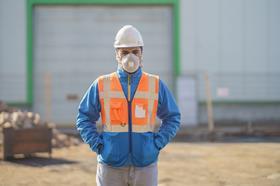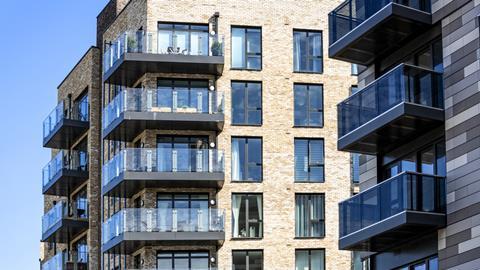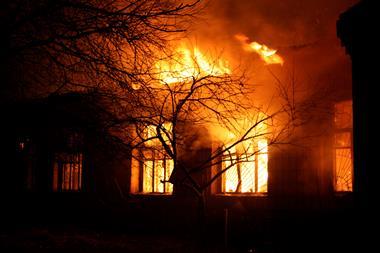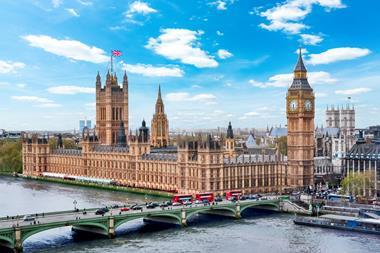Brokers attempt to pick up the pieces as insurers shun high-rise block exposures, however broker trade body believes it would be ‘disappointing’ if the industry failed to find a workable solution for a risk the sector has been insuring for centuries
The insurance industry has been back in the parliamentary doghouse.
The cause this time was escalating premiums, which owners of many new build flats find themselves saddled with in the wake of the Grenfell Tower fire three and a half years ago.
In a debate held on 24 February regarding the Buildings Safety Bill, which is designed to remedy the faults in the construction industry that contributed to the loss of 72 lives in the disaster, MPs from all parties lined up to complain about the premium hikes faced by their constituents.

Read more…Insurance industry relays recommendations as pre-legislative draft Building Safety Bill scrutinised
Not subscribed? Become a subscriber and access our premium content
Andrew Bulmer, chief executive of the Institute of Residential Property Management, told a meeting of the All Party Parliamentary Fire Safety and Rescue Group the following day that his members are typically reporting premium increases of 400%, but that there are “too many examples” around the 1000% mark.
Lord Porter, a Tory peer and former leader or the Local Government Association, accused the insurance industry of “profiteering”, which the ABI has rejected.
“The insurance market is broken and something needs to be done”, was the verdict of veteran conservative and Father of the House Sir Peter Bottomley, who is the longest serving MP.
Remediation ramifications
The premium increases are being seen on two types of insurance – professional indemnity (PI) and buildings.
The government came up with a package of measures last month to try and fix the cladding remediation issues that underpin the rocketing premium increases; a trend which Building Safety Register co-founder Matt Hodges-Long began spotting around this time last year.
The overall scale of the package announced by the government wasn’t as ambitious as Biba pushed for in its recently published 2021 manifesto.
Handouts won’t be available for buildings that are clad with unsafe external wall systems but are less than 18m tall, as the brokers’ body had called for. And the extra £3.5bn promised cash injection brings the government’s total commitment to £5bn, which is only half the sum that Biba suggested was needed to tackle the problem in its manifesto.
Nevertheless Graeme Trudgill, executive director of Biba, said the increased size of the cladding removal pot is a “step in the right direction”, as is the £30m earmarked for fitting alarms.
Allison Whittington, head of housing at Zurich, added: “The government’s announcement regarding funding cladding remediation provides much needed clarity and it is essential that the government takes robust measures where there is a real penalty on individuals responsible for cutting corners and leaving a legacy of unsafe buildings.”
Biba also hailed as a “very positive development” the government’s commitment to work towards a targeted, state-backed indemnity scheme for qualified professionals unable to obtain PI insurance for completing EWS1 forms, which have become a pre-requisite for those wishing to buy and sell properties in blocks with cladding.
This matters because fixing the PI issue is the most immediately pressing issue facing the industry, said Trudgill. “PI is the first thing to solve because this is preventing the fire engineers doing remediation work,” he explained.
“Once the remediation work is done, property insurance is much easier to get and we should have more players in the market.
“You can unlock the property challenge if you resolve the PI challenge.”
He added that Biba is working with the government and other bodies from the property sector to develop a solution to the PI insurance conundrum.
“Insurers didn’t realise that builders hadn’t put in the right materials. Now that it has been seen how terrible the effects of that can be, obviously there’s a correction taking place in the market and PI insurers are extremely concerned about the exposures involved in signing off these high-rise buildings.”
Expertise mismatch
This problem is compounded by a dearth of qualified fire engineers who have traditionally carried out External Wall System (EWS) assessments, said Hodges-Long.
Barely a tenth of the UK’s approximately 300 chartered members of the Institution of Fire Engineers are available for EWS work because the “vast majority” are put off by liability issues, he added.
This has, in turn, created a vast mismatch with “thousands” of buildings that have had to be assessed post-Grenfell.
Guidance, issued in January for consultation by the Royal Institution of Chartered Surveyors (RICS) following an agreement with the government and lenders, narrows the criteria for the buildings that will require an EWS assessment.
The government also announced a £700,000 investment to train 2,000 building assessors during the first half of this year.

Read more…Post-Grenfell surveyor PI challenges – opportunity or risk for insurance?
Not subscribed? Become a subscriber and access our premium content
Hodges-Long is worried that the RICS guidance won’t offer protection for liability purposes, while retraining surveyors lacking expertise in fire issues doesn’t fix the underlying issues.
However, Trudgill believes the proposal is a step back to a functioning market.
“Having PI interventions and providing fire alarms hopefully provides a better environment for property insurers to operate,” he said, adding that “thankfully” frequency of claims like Grenfell is “incredibly low”.
“If property owners can demonstrate risk management measures, there is obviously a job to be done.”
Last resort intervention
For now though, the problem for brokers is that insurers are limiting their exposure to high-rise blocks. Trudgill said: “Brokers are telling us that their job is getting much harder because they can’t get a single building insured with an insurer.
“Where an insurer would have insured a whole high-rise building with cladding, now brokers are having to do co-insurance,” he explained.
For example, while the primary insurer might insure the first £10m, others will then add excess layers depending on their own capacity.
Trudgill acknowledged it is an “increasingly difficult and expensive process compared to what [the market] had in the past.
These difficulties have prompted some, including several MPs in February’s House of Commons debate, to call for a cladding version of the Flood Re insurer of last resort scheme, which could be set up to provide cover for properties that would otherwise be uninsurable.
There are situations where such an outcome may be unavoidable. Trudgill said: “We want to see a thriving, healthy market, but when you get close to market failure, you might look for government intervention.”
But pointing out that the insurance industry has been dealing with fire since it first emerged more than three centuries ago, he added: “We are working on a market solution. If we can’t get one, it would be really disappointing.
“Fire insurance has been one of our key things for centuries so would be really disappointing if we couldn’t get a solution as an industry.”
Hosted by comedian and actor Tom Allen, 34 Gold, 23 Silver and 22 Bronze awards were handed out across an amazing 34 categories recognising brilliance and innovation right across the breadth of UK general insurance.




















































No comments yet